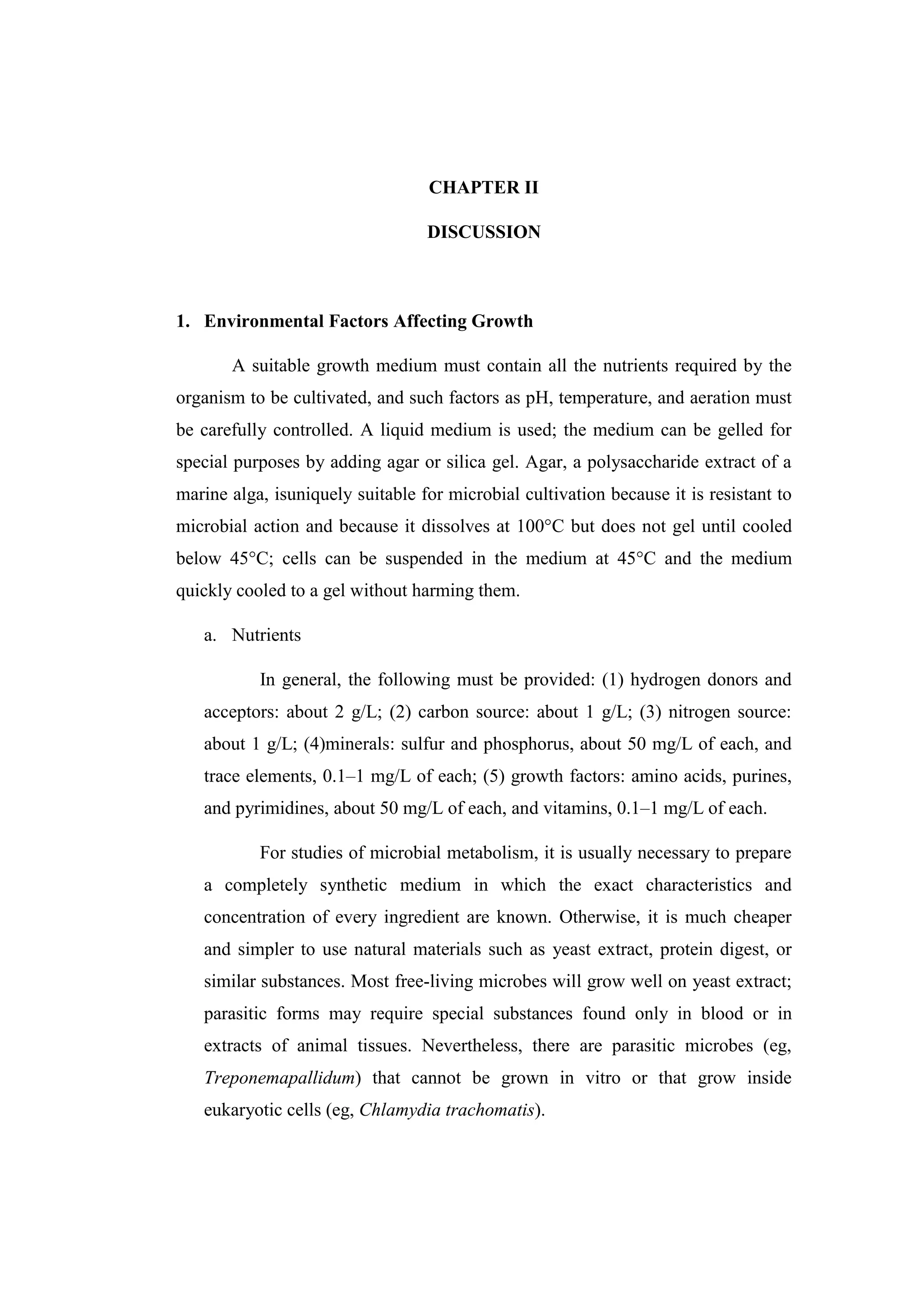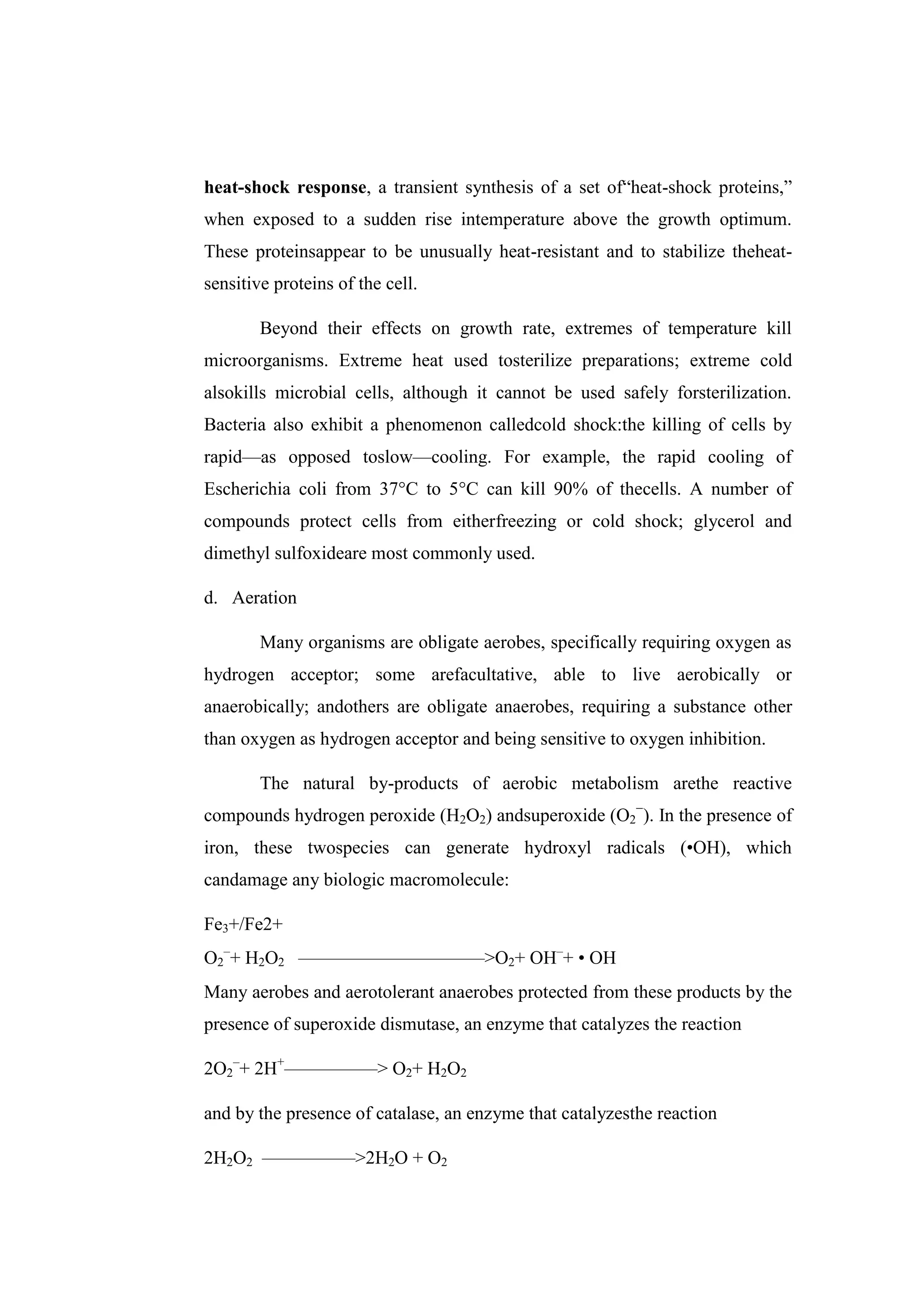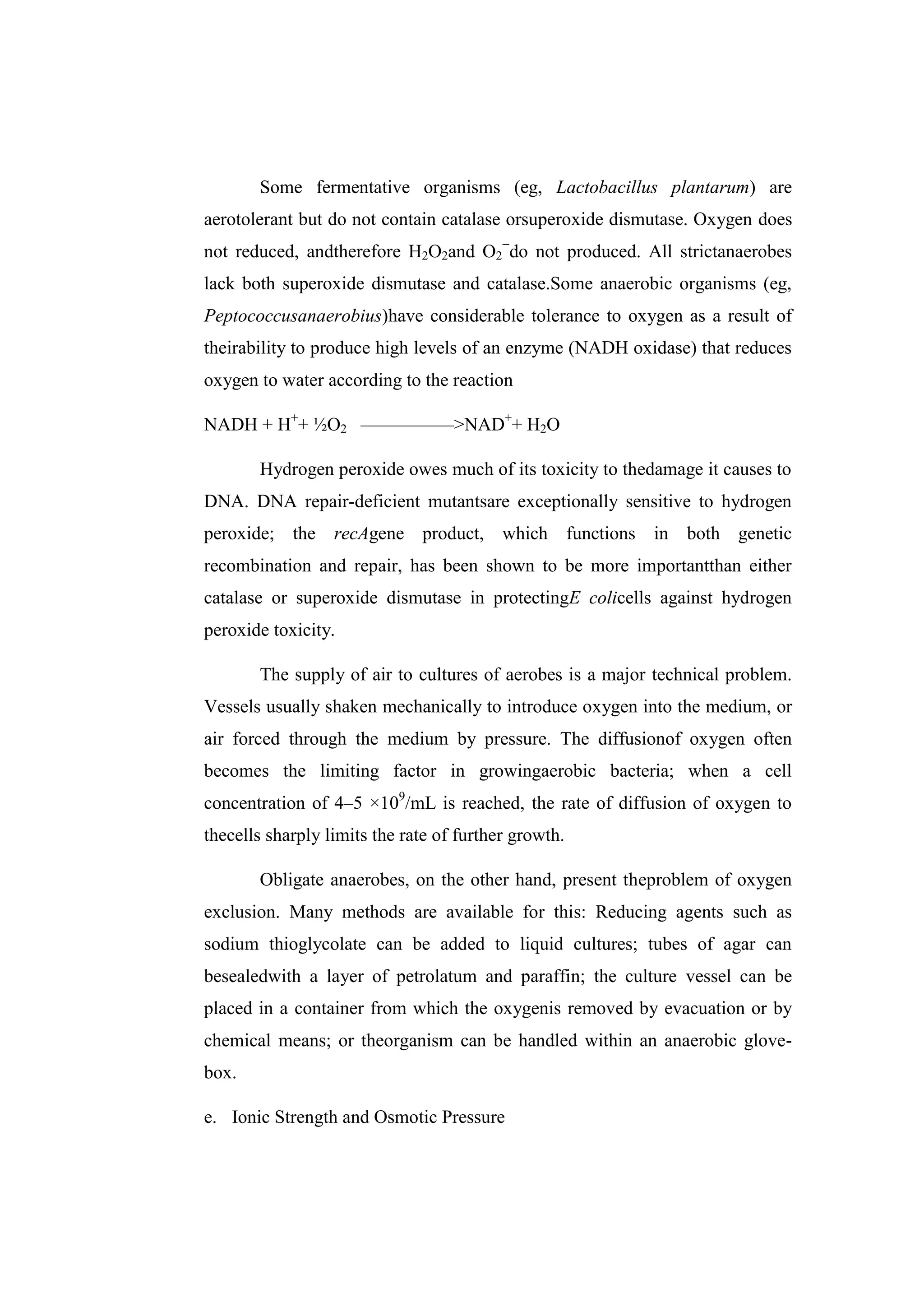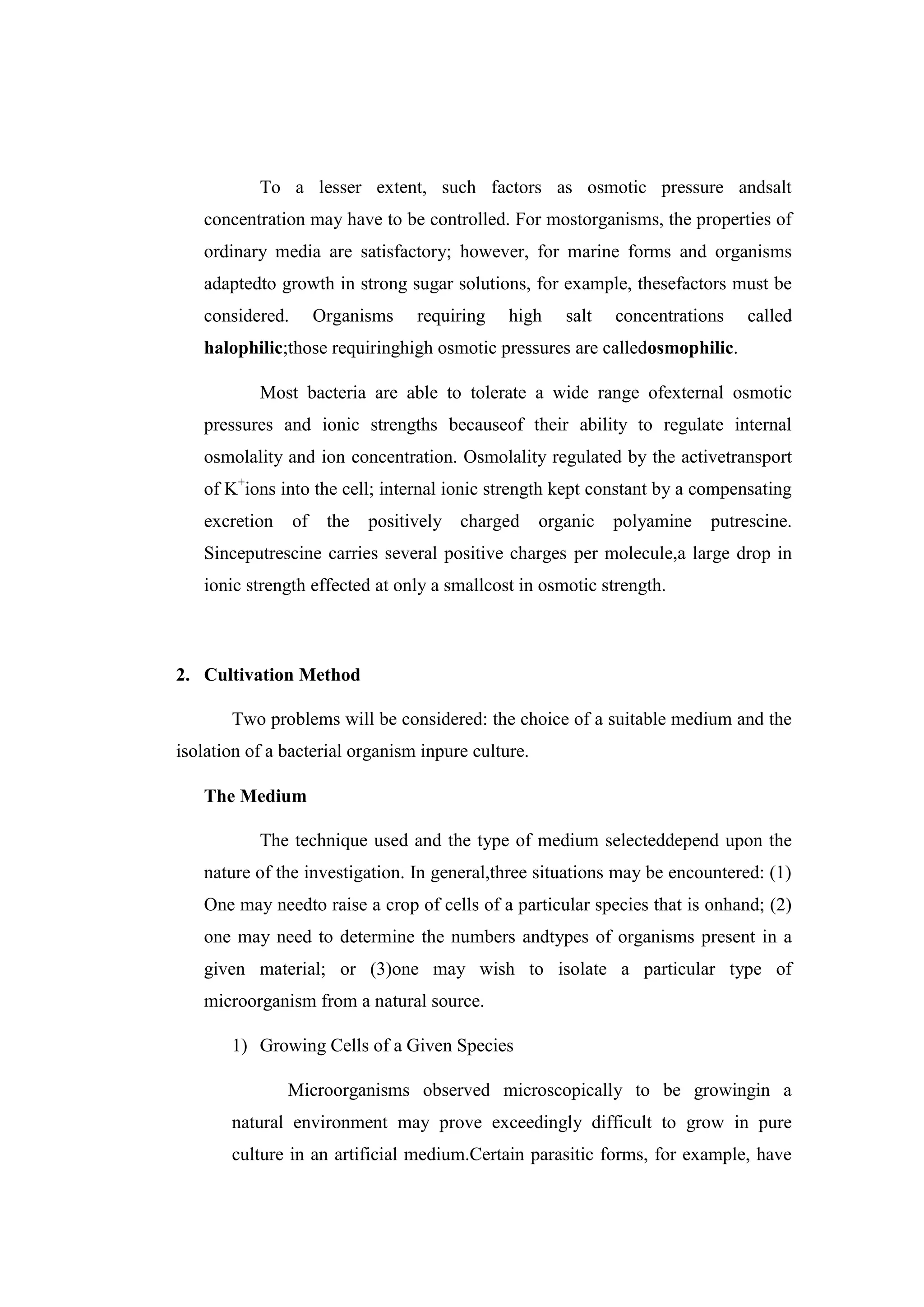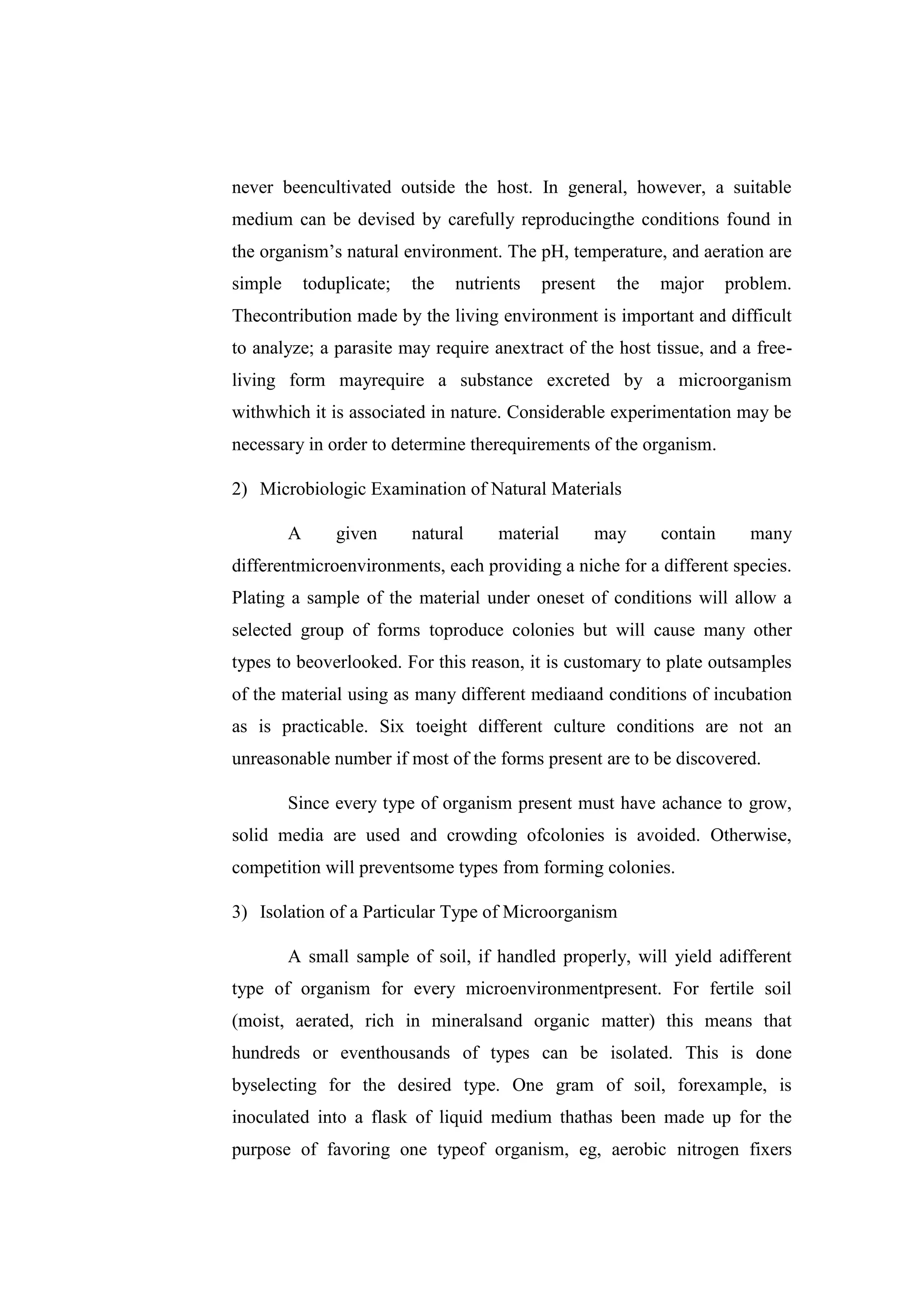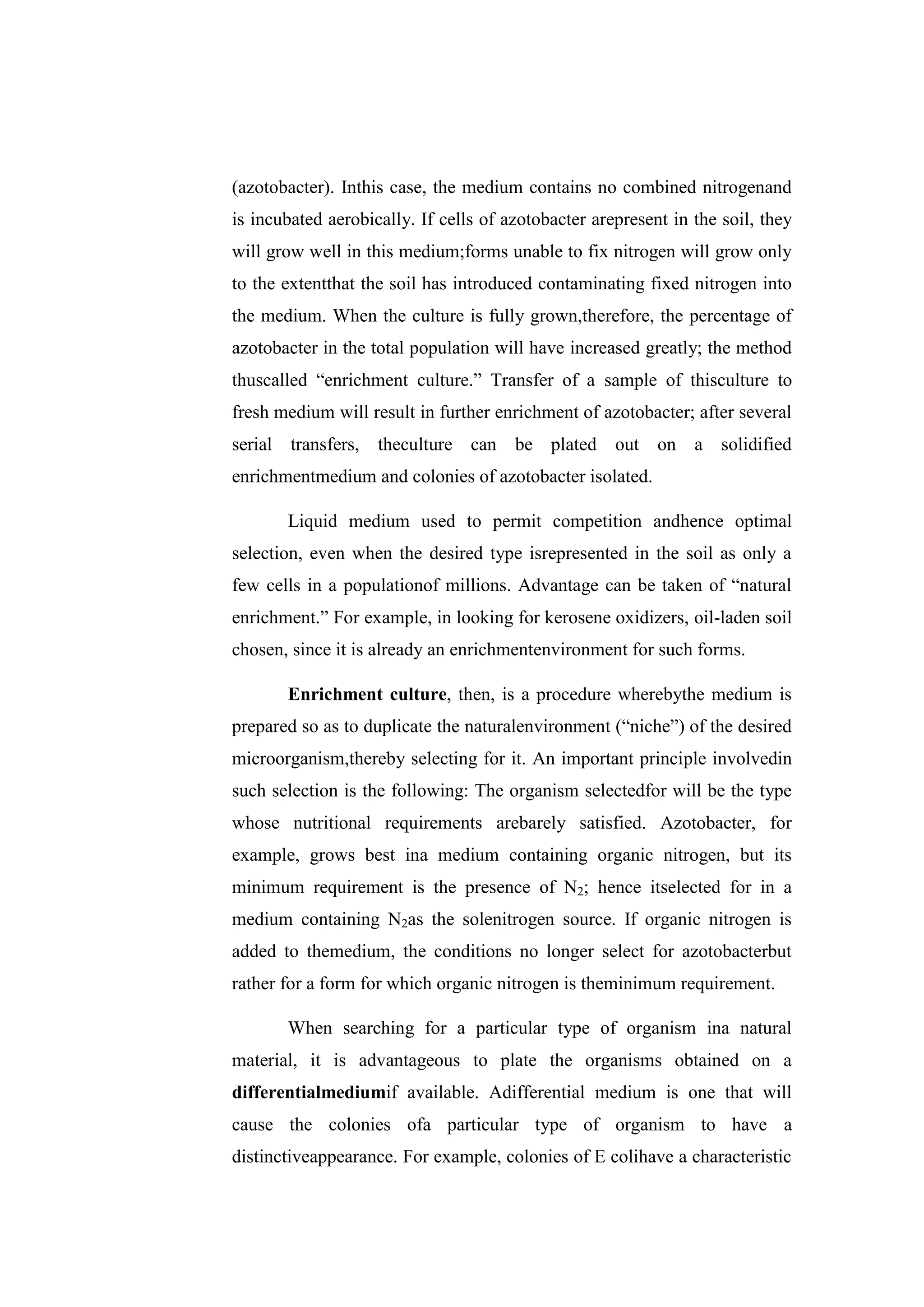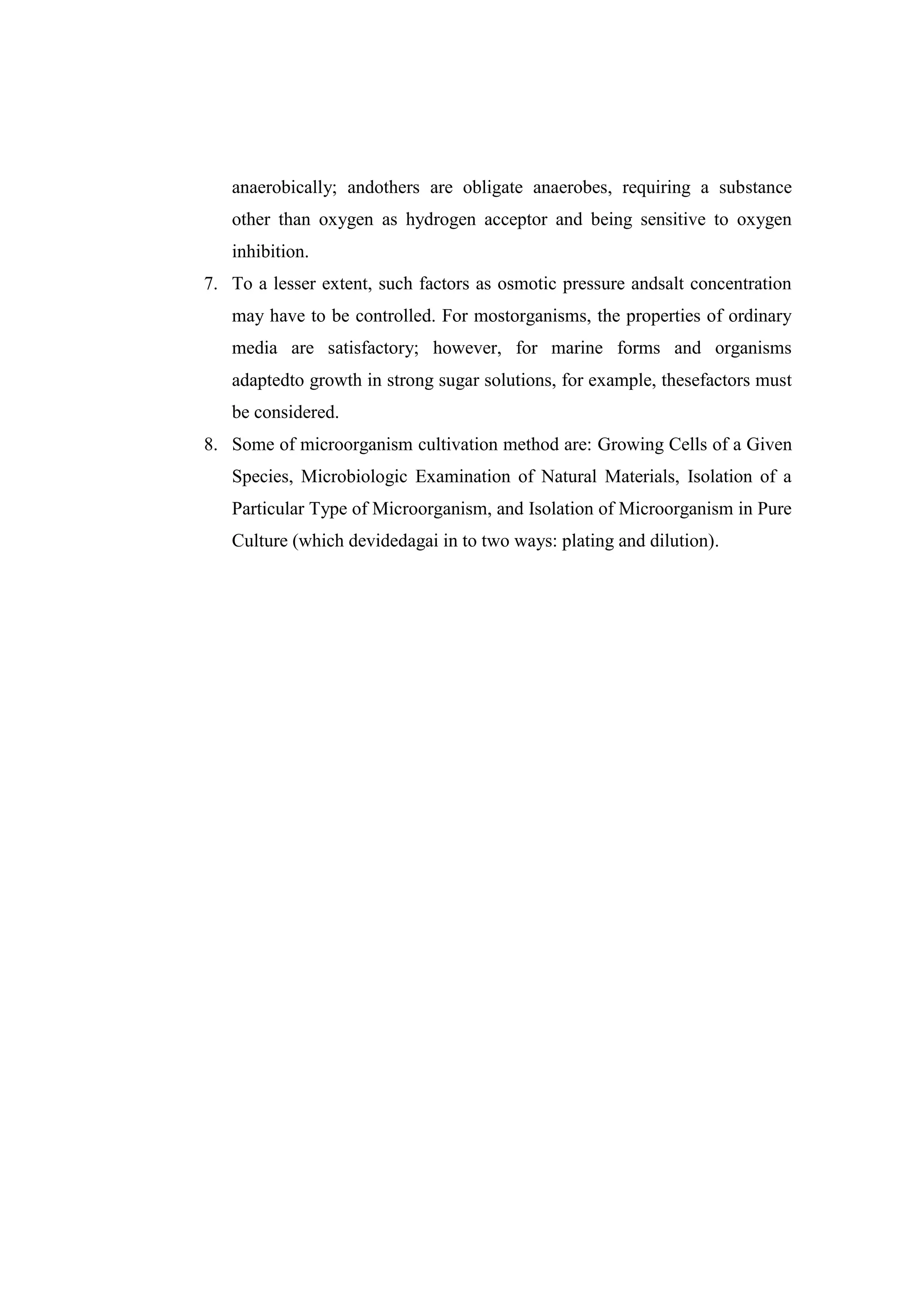The document discusses the cultivation of microorganisms, outlining the necessary environmental factors such as nutrients, pH, temperature, aeration, salt concentration, and osmotic pressure. It details varying requirements for different microbial species, methods for maintaining suitable growth conditions, and strategies for isolating specific microorganisms from natural sources. The text emphasizes the importance of replicating natural conditions for successful in vitro cultivation and the diverse nutritional needs of microorganisms.



